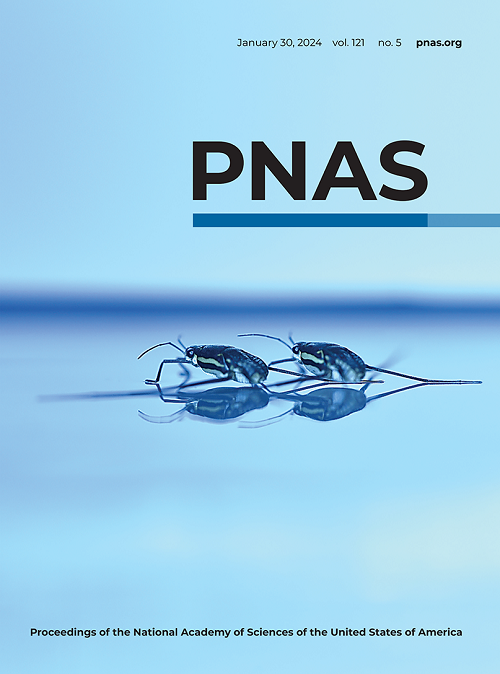通过单原子位点和污染物调解电子转移过程的芬顿类活性和路径调节
IF 9.4
1区 综合性期刊
Q1 MULTIDISCIPLINARY SCIENCES
Proceedings of the National Academy of Sciences of the United States of America
Pub Date : 2024-01-08
DOI:10.1073/pnas.2313387121
引用次数: 0
摘要
关于单原子催化剂(SACs)/过一硫酸盐(PMS)体系对目标污染物的多功能氧化途径的起源的研究总是与配位结构相关,而不是从污染物特性的角度出发,并且缺乏对机理共性的分析。本研究以木质素为络合剂和底物前驱体,通过热解工艺制备了多种单原子催化剂(M-SACs,M:Fe、Co 和 Cu)。选取了各种参考文献中常见的16种污染物,其在M-SACs/PMS体系中的ln k obs值与其亲电指数(反映污染物的电子接受/捐献能力)以及污染物与M-SACs/PMS络合物之间的能隙(R 2 = 0.801至0.840)具有良好的相关性(R 2 = 0.832至0.883)。在 M-SACs/PMS 系统中,电子传递过程(ETP)和自由基途径都能显著增强,而对于亲电指数较低的污染物,自由基氧化被 ETP 氧化压倒。相反,亲电指数较高的污染物对 M-SACs/PMS 复合物的电子供能能力较弱,从而导致 ETP 氧化作用较弱,但自由基氧化作用明显。此外,不同 M-SACs/PMS 系统中的 ETP 氧化作用可通过 M-SACs/PMS 复合物与污染物之间的能隙进行调节。因此,M-SACs/PMS 系统中的芬顿类活性可以通过反应途径得到很好的调节,而反应途径则由污染物的亲电指数和单原子位点决定。这项工作为建立基于 PMS 的 AOP 系统提供了一种策略,该系统具有可调的氧化能力和途径,可实现高效的有机净化。本文章由计算机程序翻译,如有差异,请以英文原文为准。
Fenton-like activity and pathway modulation via single-atom sites and pollutants comediates the electron transfer process
The studies on the origin of versatile oxidation pathways toward targeted pollutants in the single-atom catalysts (SACs)/peroxymonosulfate (PMS) systems were always associated with the coordination structures rather than the perspective of pollutant characteristics, and the analysis of mechanism commonality is lacking. In this work, a variety of single-atom catalysts (M-SACs, M: Fe, Co, and Cu) were fabricated via a pyrolysis process using lignin as the complexation agent and substrate precursor. Sixteen kinds of commonly detected pollutants in various references were selected, and their ln k obs values in M-SACs/PMS systems correlated well ( R 2 = 0.832 to 0.883) with their electrophilic indexes (reflecting the electron accepting/donating ability of the pollutants) as well as the energy gap ( R 2 = 0.801 to 0.840) between the pollutants and M-SACs/PMS complexes. Both the electron transfer process (ETP) and radical pathways can be significantly enhanced in the M-SACs/PMS systems, while radical oxidation was overwhelmed by the ETP oxidation toward the pollutants with lower electrophilic indexes. In contrast, pollutants with higher electrophilic indexes represented the weaker electron-donating capacity to the M-SACs/PMS complexes, which resulted in the weaker ETP oxidation accompanied with noticeable radical oxidation. In addition, the ETP oxidation in different M-SACs/PMS systems can be regulated via the energy gaps between the M-SACs/PMS complexes and pollutants. As a result, the Fenton-like activities in the M-SACs/PMS systems could be well modulated by the reaction pathways, which were determined by both electrophilic indexes of pollutants and single-atom sites. This work provided a strategy to establish PMS-based AOP systems with tunable oxidation capacities and pathways for high-efficiency organic decontamination.
求助全文
通过发布文献求助,成功后即可免费获取论文全文。
去求助
来源期刊
CiteScore
19.00
自引率
0.90%
发文量
3575
审稿时长
2.5 months
期刊介绍:
The Proceedings of the National Academy of Sciences (PNAS), a peer-reviewed journal of the National Academy of Sciences (NAS), serves as an authoritative source for high-impact, original research across the biological, physical, and social sciences. With a global scope, the journal welcomes submissions from researchers worldwide, making it an inclusive platform for advancing scientific knowledge.

 求助内容:
求助内容: 应助结果提醒方式:
应助结果提醒方式:


